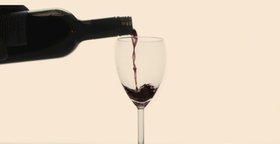Wine Fraud: Infamous Scandals, How to Identify Fake Wine
Did you know that the fake wine industry amounts to a whopping $3 billion?
For decades, rare, collectible wine has been subject to counterfeiting. Today, even mid-tier wines, a la Jacob’s Creek, deal with the problem of fake wine.
Irrespective of where you live, fraudulent wine poses a huge problem for investors and collectors.
This article will explore the common types of wine fraud, how to identify a fake, some of the world’s most infamous wine counterfeiters, and the history of fake wine.
We’ll also reveal how a trusted wine investment firm like Vinovest can help you protect against fake wines.
Further reading
- Fast track your wine investment journey with our In-Depth Guide to Investing in Wine.
- Find out if you should Invest in NFT Wine and if this type of wine can help against counterfeit wine challenges.
3 Common Types of Wine Fraud
Fake wine comes in various forms. And, as an investor, the last thing you want is to be tricked into buying a counterfeit bottle instead of high-end wine.
Here are the three common types of wine fraud:
1. Fake Bottle and Label
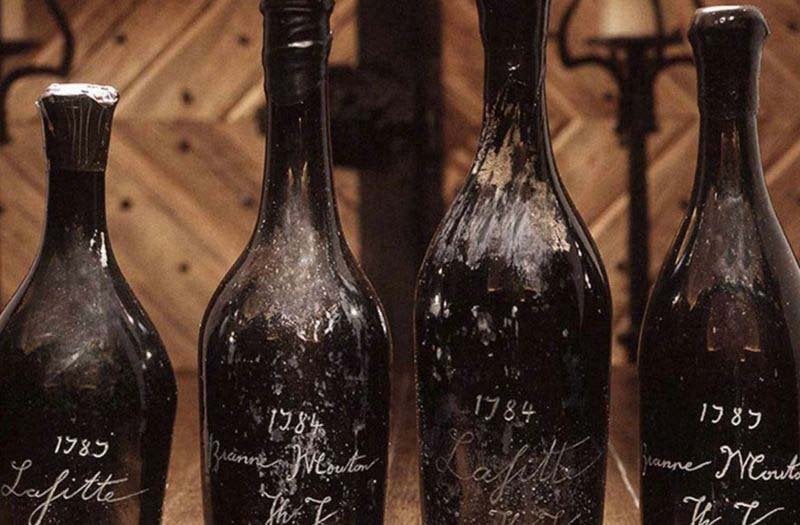
Some counterfeiters relabel cheap wine to look like expensive, collectible wine. They even falsify the wines’ origins to ensure high selling prices.
Fake bottles are also part of the counterfeiting ring. For example, a producer may only make a specific fine red wine in a certain bottle format. Yet, you may find them in different bottle formats in some stores. These are very likely fake.
2. Wine Adulteration

Wine adulteration is when the wine is weakened or thinned, often with the inclusion of ingredients like juices. Sometimes counterfeiters also add sweeteners and additives to improve flavor or color.
Other times, the fake wine doesn’t even have any actual wine. It’s substituted with a cheaper substance that might contain harmful chemicals, sweeteners, or even toxins (like methanol.)
3. Fraud Wine Investment Firms
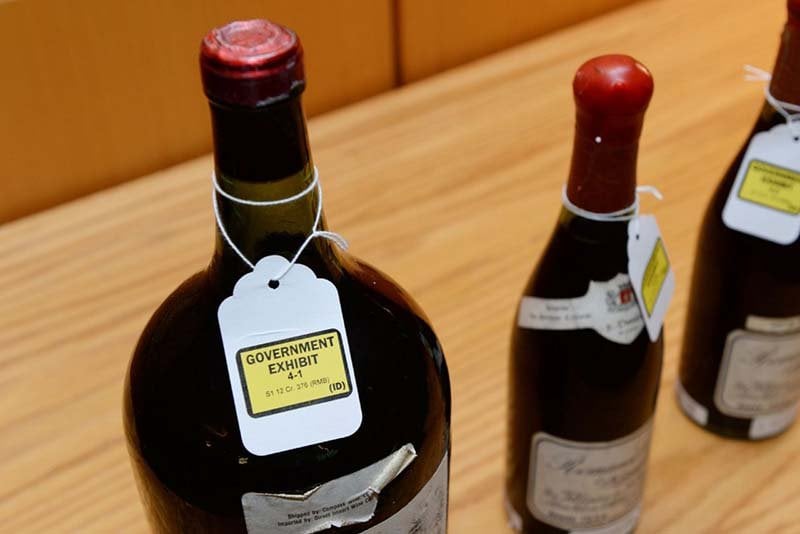
If you’re an investor, do your due diligence about wine investment firms.
The fake ones cold call potential customers. The firm offers the wine bottles at sky-high prices and promises exceptional returns, but they never deliver.
Shortly after, the company goes into a planned liquidation, effectively disappearing with your money.
So how exactly can you spot fake wine bottles?
Let’s find out.
4 Ways To Identify Fake Wine According To The Pros
According to Wine Spectator, about 5% of collectible wine sold in secondary markets is fake.
Here are four tips to help identify fraudulent wine:
1. Scrutinize The Label
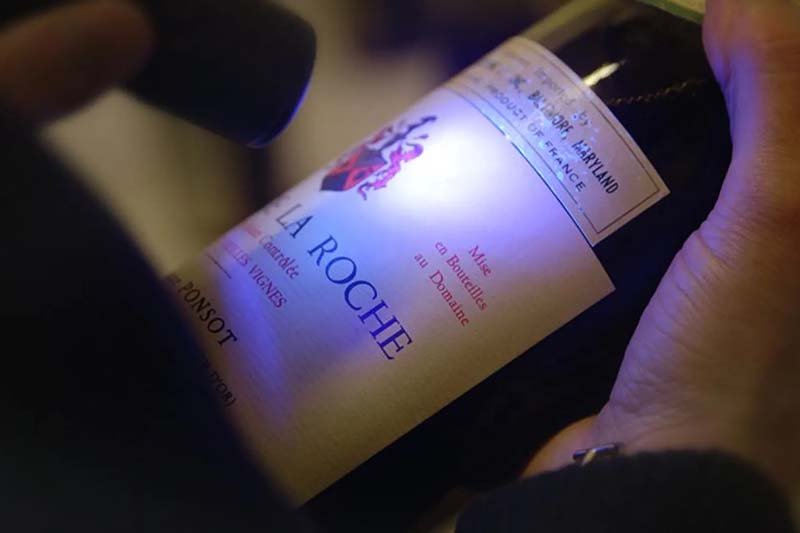
You may be surprised by how much information a wine bottle label contains.
Here’s what you need to keep an eye on when deciding if you’re dealing with a counterfeit bottle:
- The paper type: Identity what kind of paper is used for the label. To deter counterfeiters, brands will use labels that have a combination of features like a special texture, microprinting, ink, and cutouts. The downside is that a counterfeiter can just save the original bottle and label and refill it with adultered wine.
- Damaged labels: Watch out for labels that are weirdly scuffed or really discolored — frauds tend to use staining agents like coffee, tea, and tobacco. Give it a sniff and if it has an odd aroma, think twice about buying it.
- Label ink: Study the label’s ink on a bottle through a magnifying glass. Prestigious brands’ labels have a letter plate press with sharp, fine lines. Other brands have labels made with a dot matrix printer, resulting in cloudy edges.
Many counterfeiters print labels with an inkjet printer. This can leave colored or pixelated spots all over the paper, so pay attention to this.
2. Check The Bottle
A counterfeiter can easily replicate a wine bottle, so pay attention to details like:
- How a bottle is made (Eg. glass blow bottles)
- Markings and embossings
- Punts (or indentations)
- Bottle color
Research what the bottle you’re buying should look like and compare it against what you’re procuring.
3. Be Aware of Wine Laws
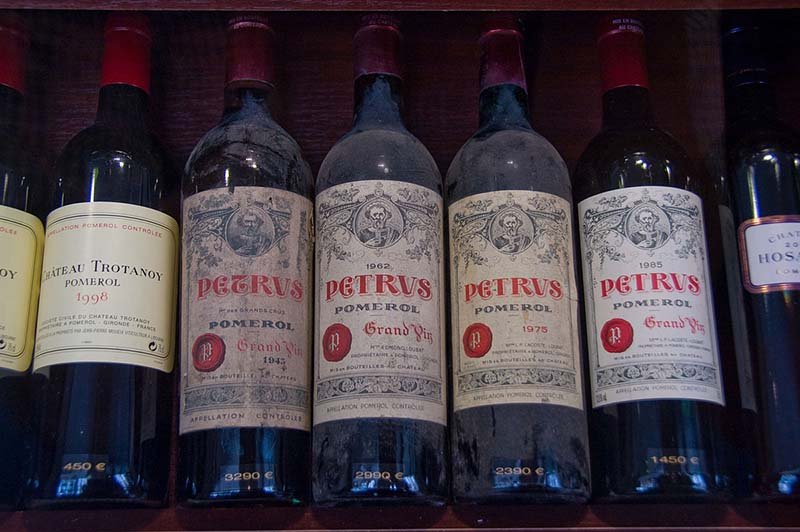
Stay conscious of the different wine laws like the Bordeaux Classifications and an appellation’s rules and regulations.
For example, you’ll know right away that a 1952 Grand Cru Saint Emilion wine is fake as the designation wasn’t set up until 1954.
Also, be aware of the vintages and bottle formats a winery has produced. Some wine regions allow only specific bottle types to be produced, so research this ahead of time.
4. Examine The Cork And Capsule

Wine appellations sometimes have distinct corks lengths in their authentic bottles, along with other minute differences.
Pay attention to:
- Cork lengths
- Cork closures (inked or fire branded)
- Distinct cork artwork of prestigious wineries
- Dates on corks (are they intact?)
How To Protect Against Counterfeit Wine
Here’s what you can do to guard against fraudulent wine:
1. Buy Only From A Trusted Source Like Vinovest
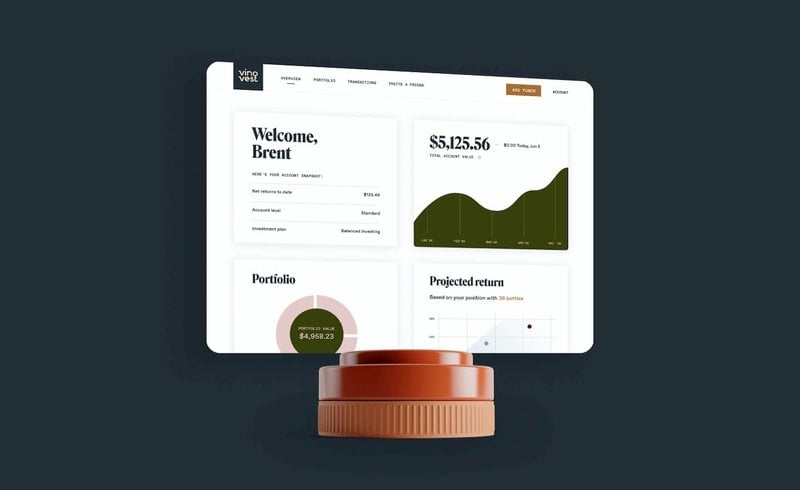
It’s vital that you only purchase wine from a trusted source. This applies to auctions, private sales, online purchases, and more.
The easiest and most secure way to buy authentic fine wine is through Vinovest.
Vinovest is a reputed wine investment firm that helps youbuy, store, and sell wine from anywhere in the world.
What makes Vinovest stand out?
- Authenticity: Vinovest goes the extra mile to trace a wine’s provenance to ensure it’s not a fake bottle.
- Trusted sources: They source wines directly from top wineries, winemakers, global wine exchanges and trusted wine merchants. So, there’s less risk of buying a fake wine bottle.
- Excellent storage: Your collection will be kept in secure, bonded warehouses that provide optimal storage conditions.
- Security: The warehouses are under 24/7 surveillance. And, in the event of a power failure, power backups are in place to maintain the right climate conditions for your wines.
- Insurance: Vinovest also offers a full insurance policy at market value. This protects your investment against theft, loss, or breakage.
- Curated portfolio: The team at Vinovest will also curate a collection of any red and white wine bottles according to your preferences.
- Return on investment: When you’re ready to sell, they will assist you with finding the right buyer, so you make a nice profit.
- Delivery: Not stopping there, Vinovest will even deliver the wine to the buyer or anywhere else in the world.
- Deep wine network: Through Vinovest, you will also gain access to a deep wine network. This includes upcoming private sales, limited wine releases, upcoming vineyards, wine tastings, and much more.
The best part?
Getting started is quick and simple!
Just head to the Vinovest website and sign up with your personal information!
2. Do Your Research Beforehand
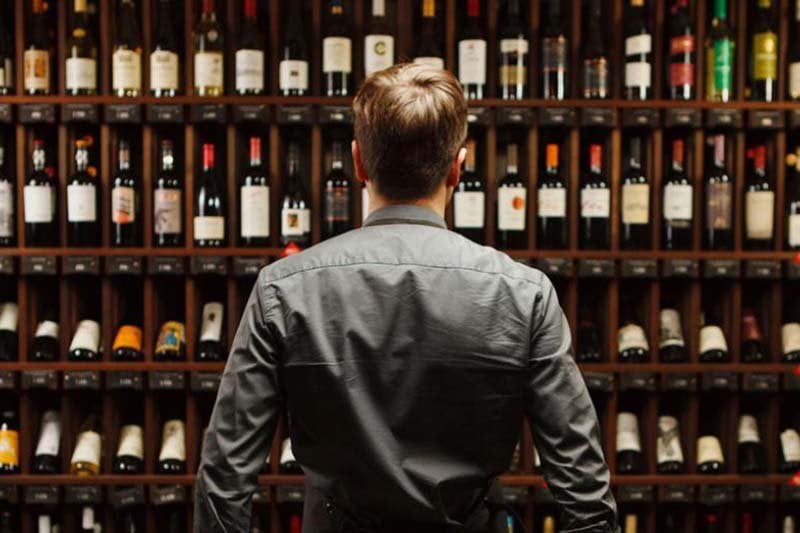
Whether you purchase expensive wine on your own or through a platform like Vinovest, it’s always prudent to do your own research (more so if you’re going it alone.)
There are a variety of apps and sites like Wine Searcher helping collectors find out information about a wine or winery. So once you’ve identified a fine wine you’d like to own, research its labels, history, bottles, the wine appellation’s laws, release dates and more.
If you’re a frequent wine buyer, an excellent tool to have on hand is a jeweler’s loupe to help you study bottle labels. It’ll help you spot any inconsistencies based on your research.
Fun Fact: The American whiskey/ bourbon industry also struggles to verify authentic bottles. The fake bottles amount to $8.6 billion.
Now, let’s find out about a couple of the most notorious wine counterfeiters in the world.
The World’s Most Notable Wine Counterfeiters
There are many wine fraudsters mixing concoctions and tricking consumers into buying their fake wine.
But there are two individuals who stand out for their transgressions - Rudy Kurniawan and Hardy Rodenstock.
1. Rudy Kurniawan

Indonesian national and wine collector/ connoisseur Rudy Kurniawan was hugely popular in the Los Angeles wine scene for throwing lavish dinners.
Little did people know he was minting money from fake wines he made and sold.
Between 2004 and 2012, he sold millions of dollars of fake wine through auction houses like Acker Merrall & Condit.
Acker Merrall & Condit auction house sold $35 million of fake wine from just two sessions!
Kurniawan was eventually arrested in 2013, and a couple of pivotal moments led to his arrest:
- After wine collector Bill Koch grew suspicious of wine frauds, he hired authenticators to inspect his 44,000 bottle collection. He discovered that five bottles he bought from Kurniawan at an auction house were fake. Bill Koch filed a lawsuit against Kurniawan in 2008.
- Vineyard owner Laurent Ponsot discovered that Kurniawan tried to sell 1945 and 1971 Clos St Denis wines. But Laurent Ponsot’s family only began wine production in 1982. So he dug into Kurniawan’s supply chain, and in 2010, the FBI stepped in to investigate the case.
When he was arrested during a raid, the FBI discovered 200+ old bottles and over 19,000 artificially aged fake labels. They also found formulas for making rare wine from cheaper wine. Kurniawan was the first wine counterfeiter ever to go to prison.
In 2021, he was released and is expected to return to the wine industry in a more transparent role.
If you want to explore the Kurniawan story further, check out the 2016 documentary Sour Grapes.
2. Hardy Rodenstock
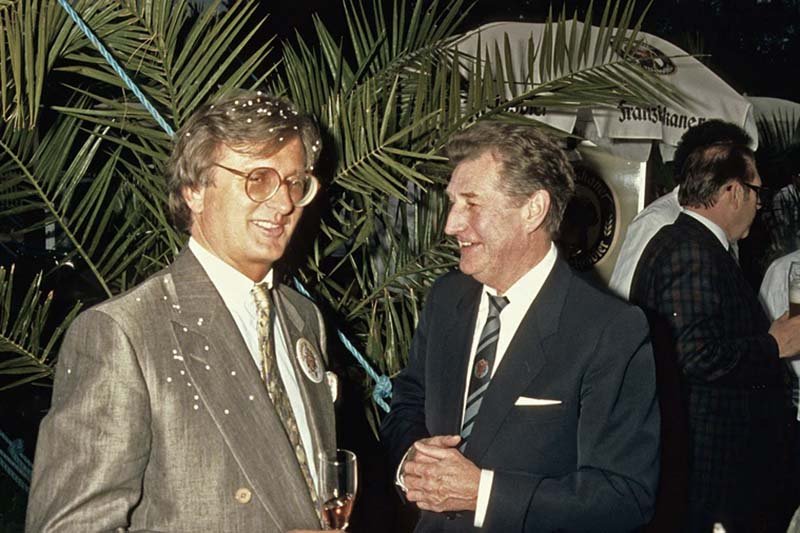
You may know German wine trader Hardy Rodenstock from when he sold fake 18th-century Château Lafite Rothschild bottles (aka the Thomas Jefferson bottles.)
Some wine collectors who bought these fake Lafite Rothschild bottles included Bill Koch and Christopher Forbes.
The four alleged Thomas Jefferson bottles were sold to Bill Koch through a Christie’s auction in 1985.
The wine counterfeiter even made up a provenance story about discovering the collection in a Paris cellar. The bottles even had the initials Th.J that were etched into the bottle with a high-speed electric drill. According to a story by Inside Edition, Koch tracked down a glass worker who was paid to engrave these initials on at least one of the bottles.
In the 1990s, Rodenstock would host high-profile wine tastings with very rare wine bottles (mostly 18th and 19th centuries) from his collection. His guest list included influential individuals like Robert M Parker, Jancis Robinson, and more.
Interestingly, wine fraud dates back to the 5th century (and probably earlier too!)
A Brief History of Fake Wine
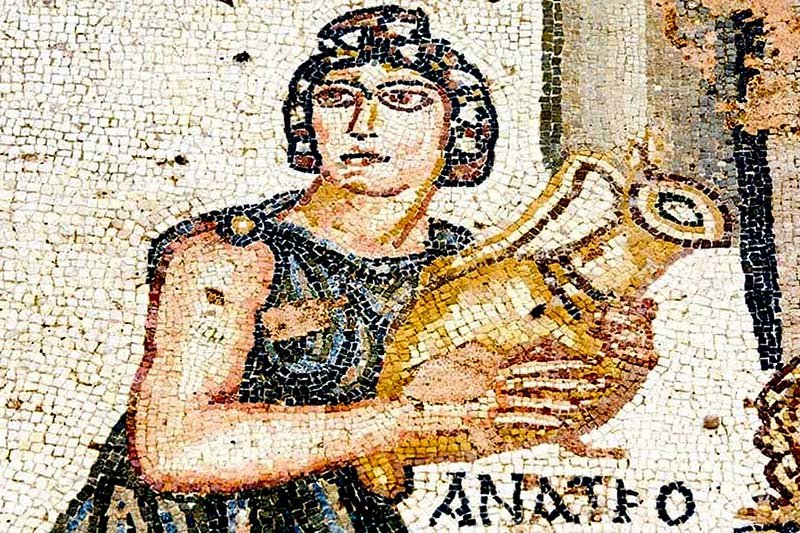
History indicates that for as long as wine existed, counterfeits have too. Let’s take a look at some moments in history when fake wine played a significant role:
- Ancient Rome (8th century BC-5th century CE): Counterfeit wine was so widespread that the nobility couldn’t be certain the wine they were drinking was genuine. The poor and middle-class Romans were served an unlimited supply of high-end Falernian wine for very low prices.
- Middle Ages (5th century CE-14th century CE): In London, the authorities laid down rules for tavern owners. This included German, Spanish and French wines not being stored together, so they were less likely to be mixed up or falsely presented to the customer.
- Age of Enlightenment (18th century): During this era, fake wine continued to flourish. Counterfeiters would use apples to produce Champagne and sloe to whip up Bordeaux wine. They’d even use dried raisins from grape vines to make fake wine that passed off as French or Italian.
- Prohibition (19th century): During prohibition in the US, wine, bourbon, and other alcohol were illegal. So merchants would sell bricks of grape concentrate. When mixed with yeast, water and sugar, it could turn into homemade wine. This wasn’t necessarily fake wine as consumers knowingly purchased these bricks. But the wine couldn’t pass as authentic.
Eventually, many governments decided to create legislation on wine fraud.
In 1860, the British parliament issued legislation explicitly defining ‘wine’ to distinguish the original drink from the counterfeits.
Eventually, the French (1889), German (1892), and Italian (1904) governments followed suit.
Stress-Free Investing With Vinovest
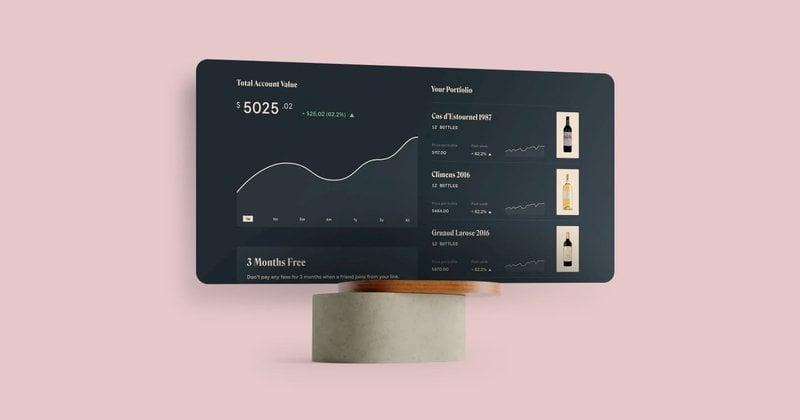
There’s no way around it: Fraudulent wine will always be prevalent worldwide.
As an investor, you can do your research and stay up to date with bottle formats, labels, wine laws and more. If you’re careful where you procure your wine, you’ll be less likely to fall into a fake wine trap.
Meanwhile, if you’d rather not deal with potential fake bottle problems or the minute details of curating a portfolio, Vinovest can quickly help you put together a selection. Yes, even your favorite Cabernet Sauvignon red wine bottles!
Best part?
It only takes a few clicks to get started!

